The Contrast Principle in Procurement Negotiation
How Strategic Buyers Frame the Conversation and Control the Outcome
Forget price wars. Forget standard playbooks. If you’re not using the contrast principle, you’re negotiating at a disadvantage.
In high-stakes procurement, perception drives decisions. And nothing shifts perception more reliably—or more powerfully—than the contrast principle.
This isn’t about manipulation. It’s about strategic framing.
Used properly, contrast allows procurement professionals to:
-
Make demanding asks appear fair—even generous
-
Turn concessions into events worth trading for
-
Frame delays as operational risks
-
Push suppliers to negotiate within your parameters—without resistance
This article breaks down exactly what the contrast principle is, and how to use it tactically across questions, arguments, offers, concessions, and timelines to maximise value, leverage, and speed.
What Is the Contrast Principle—And Why It Gives Procurement Negotiators a Psychological Edge
The contrast principle is a behavioural bias that changes how we perceive value—not based on facts, but on what came before.
A price doesn’t feel high or low in isolation. It feels high or low relative to the last thing we saw.
In procurement, this means your offer, your terms, and even your timeline will feel more or less acceptable depending on how you frame them.
As a buyer, you can use this to:
-
Anchor expectations where you want them
-
Reframe a tough ask as the better alternative
-
Make supplier pushback appear unreasonable or non-commercial
Contrast isn’t deception. It’s psychological leverage—and it works because it sets the context that defines the conversation.
SECTION 1: How to Use the Contrast Principle in Questions—Control the Frame Before the Supplier Even Responds
In professional buying, questions are not neutral—they’re tools of influence.
A well-constructed question doesn’t just gather information. It anchors expectations, reframes what’s acceptable, and limits the supplier’s room to manoeuvre.
Example 1: Price Anchoring with Trade-Offs
“Would £460K with 60-day payment terms, or £480K with 30-day terms and quarterly rebate reviews, be more workable for you?”
You’re not inviting open-ended discussion. You’re forcing a choice between two buyer-favoured options—both of which are within your pre-defined commercial guardrails.
Example 2: SLA Control with Strategic Trade
“Would a 4-hour SLA with early resolution incentives, or 3 hours with an extended warranty clause, better support your service model?”
Now you’re anchoring both response time and value-add. You give the illusion of choice, but you’re steering the entire conversation.
Example 3: Penalty Structuring with Consequence
“Would 5% penalties tied to delivery windows, or 7% with the option to reassign volume after two failures, work better for you?”
Here, resistance doesn’t just mean disagreement—it triggers escalation risk. The supplier feels the pressure before they push back.
Tactical Tip:
Structure your questions around two anchored alternatives—both in your favour. This reduces friction, drives clarity, and avoids time-wasting negotiation loops.
SECTION 2: Presenting Arguments with Contrast—Make Supplier Resistance Feel Irrational
Procurement negotiators must do more than present facts. They must shape perception.
The contrast principle allows you to frame your position as the balanced midpoint between extremes—forcing suppliers to treat even aggressive demands as reasonable.
Example 1: Price Pressure with Framed Precedent
“We’ve rejected suppliers at £580K for lower SLAs and less accountability. We’re offering £540K with guaranteed volume and stronger terms. If that doesn’t work commercially, we’ll reopen discussions with suppliers who already accept that structure.”
Now, pushback feels like misalignment with the market—not negotiation.
Example 2: SLA Framing with Status Risk
“Our top vendors meet 2-hour critical response. We’re offering 4 hours. If that’s not feasible, we’d need to reclassify this relationship as non-strategic.”
You’ve turned a service commitment into a positioning decision.
Example 3: Risk Allocation with Internal Impact
“Others have agreed to 5% delivery penalties. We’ve reduced that to 3% tied only to critical metrics. If that’s still a concern, we’ll need to notify our compliance team that exposure remains unresolved.”
You’re making their resistance feel like a problem for your legal department—not your negotiation desk.
SECTION 3: Presenting an Offer—Use Contrast to Make Your Terms Look Like the Logical Choice
The first offer you share sets the psychological baseline.
By anchoring the conversation with a more aggressive or less attractive option first, you make your real offer feel like the balanced, intelligent compromise—even if it’s designed entirely in your favour.
Example 1: Commercial Framing
“We’ve reviewed full-scope implementation at £1.2M. Our actual ask is a two-phase structure at £760K with early opt-out protection. That’s commercially cleaner and faster to deliver value.”
The supplier sees £760K not as costly, but as pragmatic and risk-controlled.
Example 2: Contract Terms
“We considered 12-month rolling contracts with full break clauses. Instead, we’re proposing a 24-month commitment—with a performance review at month 12. That creates continuity without exposing either side.”
You’ve made a 2-year fixed term feel safer than a flexible one.
SECTION 4: Using the Contrast Principle in Concession Strategy—Make Every Movement Feel Expensive
Concessions should never feel casual.
They must feel like major shifts, even when they’re planned.
By contrasting your concession with a tougher initial position, you dramatise its value—and always extract multiple returns in exchange.
Example 1: Payment Terms
“We were fixed on 60-day terms. If we offer 45, we’ll need a fixed pricing model for 18 months—and a rebate structure tied to volume acceleration.”
Example 2: Delivery Timeline
“Our requirement was four-week phased delivery. We’ll stretch to six—but that includes:
– You covering any expedited shipping if timelines slip
– And a 1% rebate tied to delivery milestone adherence”
Example 3: Warranty Duration
“We expected 36-month full coverage. We can work with 24, but we’ll require:
– A full technical audit pre-go-live
– And a freeze on spare parts pricing for 3 years”
Always remember:
A concession with contrast becomes currency.
A concession without it becomes a weakness.
SECTION 5: Use Contrast to Make Delay Feel Risky—and Movement Feel Smart
Delays feel neutral—until you frame the cost.
By contrasting immediate action with a future filled with friction, uncertainty, or loss, you make moving forward the only rational option.
Example 1: Timeline
“If we align this week, implementation begins in Q2. If not, it’s Q4—and another quarter of inflated costs and underperformance.”
Example 2: Capacity Risk
“We have onboarding resources secured for May. If this slips, you’ll be competing for Q3 delivery against higher-priority categories.”
Example 3: Strategic Downgrade
“This contract is tied to our preferred vendor review. If we miss alignment, your status may revert to tactical—reducing scope, visibility, and commercial access.”
Example 4: Budget Window
“We’re inside budget allocation now. If this isn’t committed by month-end, those funds will be reallocated or frozen.”
Contrast turns time pressure into strategic pressure—and neutral delays into dangerous ones.
Final Word: Procurement Power Isn’t Just in the Numbers. It’s in the Framing.
The contrast principle gives you the power to:
-
Make your ask feel rational—even when it’s bold
-
Control the range of negotiation before it begins
-
Turn movement into momentum
-
Use every supplier interaction to frame the next one
In a negotiation, what comes before shapes what comes next.
Use contrast deliberately, and you’ll find suppliers agreeing not because you demanded it—but because it became the only option that made sense.
Ready to Train Your Team in the Psychology of Procurement Negotiation?
At Business Negotiation Academy (BNA), we don’t teach textbook theory—we equip procurement professionals with real-world negotiation strategies grounded in behavioural science, commercial psychology, and tactical execution.
Our BNA Procurement Negotiation Training programmes are built for high-performance teams who want to:
-
Negotiate with sharper framing, faster alignment, and stronger outcomes
-
Leverage principles like contrast, loss aversion, and anchoring to maximise supplier movement
-
Control complex negotiations without escalation—and without giving away margin
Whether you’re leading global sourcing, managing strategic suppliers, or building negotiation capability across your function—we’ll show your team how to negotiate smarter, not harder.
📩 Get in touch to explore how we can support your next big negotiation or build a custom training programme for your team.
#ProcurementTraining #NegotiationExcellence #BNA #SupplierNegotiation #NegotiationSkills #ProcurementLeadership #StrategicSourcing #BehaviouralNegotiation
Recent Posts
The Contrast Principle in Procurement Negotiation
In high-stakes procurement, perception is leverage. This article explores how elite buyers use the contrast principle to frame negotiations, control supplier expectations, and...
Mastering Procurement Negotiations with Loss Aversion
In today’s procurement landscape, price cuts and supplier collaboration are no longer enough to drive meaningful results. This article explores how procurement professionals...
The High Cost of Low Leverage in Supplier Negotiations
Procurement teams don’t lose negotiations in the room—they lose them in the preparation. This article explores five leverage-killing challenges and offers practical, actionable...


